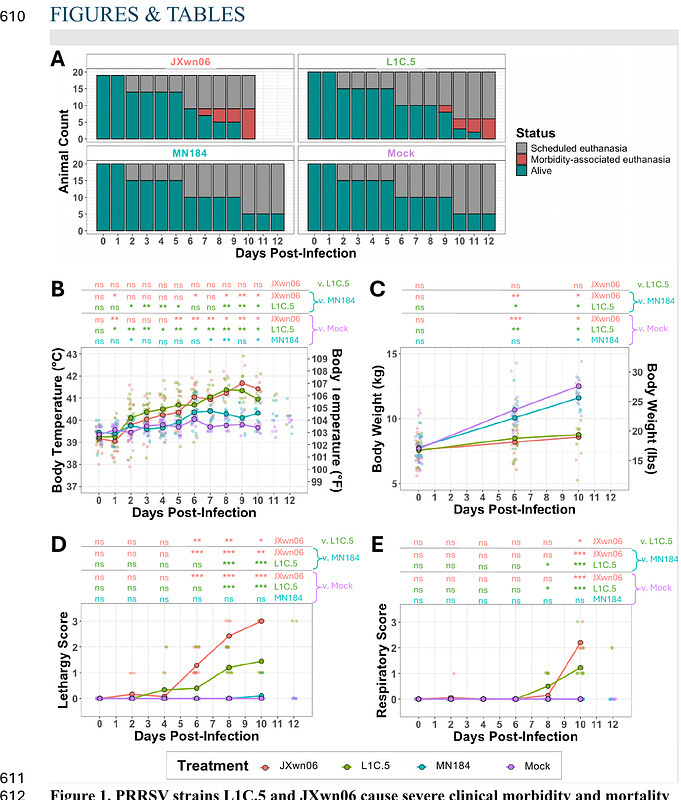United States PRRSV 1-4-4 L1C.5 isolate demonstrates similar pathogenicity to a historic Chinese highly pathogenic PRRSV

United States PRRSV 1-4-4 L1C.5 isolate demonstrates similar pathogenicity to a historic Chinese highly pathogenic PRRSV
Wiarda, J. E.; Anderson, S. J.; Kim, H.; Chang, T.; Tidgren Hanson, L.; Zanella, E. L.; Arruda, B.; Wymore Brand, M.; Hau, S. J.; Zhang, J.; Buckley, A. C.
AbstractPorcine reproductive and respiratory syndrome virus (PRRSV) is a major economic and animal health burden on the United States swine industry due to morbidity- and mortality-associated losses affecting all stages of pig production. Currently, a large proportion of losses are attributed to a highly virulent PRRSV strain, PRRSV 1-4-4 L1C.5. To benchmark the virulence of PRRSV 1-4-4 L1C.5, a study was conducted to compare pathogenicity of this contemporary strain to a historical Chinese highly pathogenic PRRSV (HP-PRRSV) strain, JXwn06, that devastated the Chinese and other Asian swine industries since 2006, as well as a moderately virulent United States PRRSV strain, MN184, considered to be one of the most virulent PRRSV strains circulating in the United States in the early 2000s. Weaned pigs were inoculated with PRRSV strains L1C.5, JXwn06, MN184, or mock inoculum and necropsied at 2, 6, and 10 days post inoculation, or as needed due to severe disease. Clinical metrics, viral loads, cytokine concentrations, PRRSV-specific antibody concentrations, and pathology were compared between treatment groups to compare pathogenicity. Results indicate a high degree of similarity disease dynamics between L1C.5 and JXwn06 animals that diverged from MN184 and mock animals. Findings indicate L1C.5 and JXwn06 cause more severe morbidity and mortality in weaned pigs than MN184. Results may be applied to develop more effective strategies for mitigating PRRSV 1-4-4 L1C.5 outbreaks currently plaguing the United States swine industry.